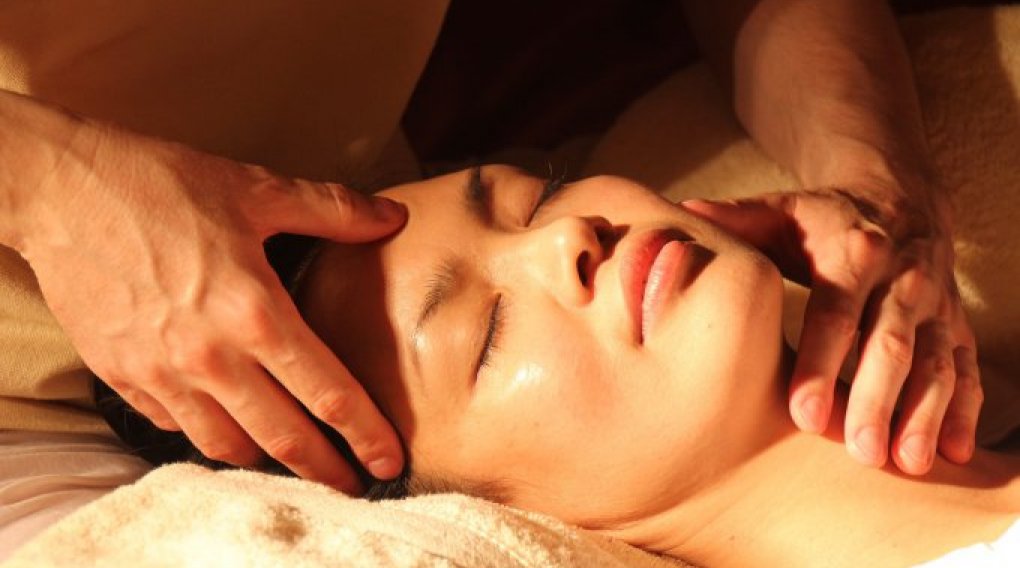
It's no secret that retinol is considered the gold standard when it comes to truly effective and transformative skincare ingredients. If you've ever talked to a dermatologist, read a few skincare articles or flipped through the pages of a magazine, you know that the vitamin A derivative is the answer to many, many skincare woes. Do you have acne? Retinol. Starting to see fine lines? Retinol. Dark spots? We don't have to say it.
Well, we hate to be the bearers of bad news, but when it comes to certain types of wrinkles and skin issues like sun spots, there's only so much that topical skin care products can do - yes, even the almighty, beloved retinol. While there are certainly things that can be prevented and treated with topical serums and creams, some skin problems are best left to the professionals and things like Botox or laser treatments.
But how can you determine if your skin goals are achievable with your favorite fancy serum, or if you're just throwing money down the drain trying to DIY a solution that can only be found in a dermatologist's office? We asked the pros to break down the different types of wrinkles and dark spots that can appear on our skin - and how to determine when it's time to see a dermatologist if you really want them to disappear.
"There are basically two big classifications," said Sheetal Sapra, dermatologist and co-founder of ICLS Dermatology and Plastic Surgery. The first is static wrinkles. These are not dependent on movement. They are just kind of there. "They usually form as a result of the natural aging process, which causes loss of collagen and volume. But they can be accentuated by external factors, especially smoking and sun exposure."
At the other end of the spectrum are dynamic wrinkles. "These are lines that appear as a result of repeated facial movements. These facial movements create wrinkles in the skin that become permanent over time."
"The most common place you'll see dynamic wrinkles is on the forehead," - Sapra said. "They result from moving your eyebrows up, squinting or stress." You may have heard of the vertical lines between the eyebrows called "rises," while the horizontal lines on the forehead are called "dead lines." "Another common area is around the eyes - 'crow's feet,'" Sapra explained. "When you move your eyebrow upward, for example, the lines on your forehead are deeper." That's how you know these are dynamic wrinkles.
You'll need to "modify your habitual behavior" to really see long-term changes.
It depends on the location and depth of the wrinkles, but static wrinkles, especially those caused by genetics, are complicated. "Some people have stronger muscles in different parts of their face, and whatever the gene expression is, it will be the same as their parents," Murad said. So prevention is really key when it comes to these types of wrinkles. 'Skin care on a medical level should be introduced as early as possible to help prevent wrinkles,' said Sapra, who sees topical products as a preventative measure and suggests that 'as you age, you should continue to refine your regimen. However, skin care [products] would not be best as a stand-alone treatment for severely aging, wrinkled skin."
Because lifestyle and environment play such an important role in the development of these types of wrinkles, "the most important skin care product in any situation is a broad spectrum UVA/UVB sunscreen with a minimum SPF 30," Sapra said. "Sunscreen is anti-aging - it prevents the photo-aging process."
However, this doesn't mean that topical formulations won't do anything for static wrinkles that have already formed. "While it's not the best solution, you will get benefits regardless of consistent use of skin care products that address your specific issues," - Murad said.
Look, you already know the answer. "Retinol," Murad said. "It's one of those versatile ingredients." (See, we told you.) So while it doesn't freeze any muscles and completely smooths the skin, retinol "visibly minimizes lines and deep wrinkles, evens skin tone and increases radiance," Murad said.
While "overexposure to the sun's rays can damage the collagen bundles that live beneath the skin's surface" and cause wrinkles, explained Murad, that hot fireball in the sky, with which we have a serious love/hate relationship, also contributes to - surprise - the dreaded sunspots. Over time and with repeated damage, a collection of pigmentation or melanin can appear, known as a sunspot, Sapra said.
Everything from vitamin C (which brightens) to alpha hydroxy acids (which exfoliates and stimulates skin cell turnover) to, yes, retinol, will likely make a difference - it's simply a matter of how much difference you're looking for.
"Laser treatments like ExcelV or PicoSure can target single lesions like sun spots or broken blood vessels," Sapra told HuffPost. "IPL (intense pulsed light) treatments can treat general superficial brown and red pigmentation in the skin. We also use lasers known as Fraxel, Halo or ProFractional to treat skin discoloration. This is an ideal way to utilize medical skin care in conjunction with a personalized treatment plan to achieve the most optimal results for each individual."
If the dark spots you want to get rid of are small, "I would always try topical agents first," Murad said. "Give them a solid chance to work for a few months, and if that doesn't help, then move on with laser."
© The smartest health magazine: MedicalMagazine.info 2021